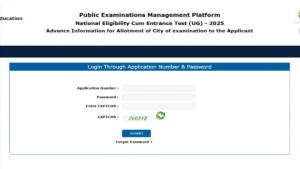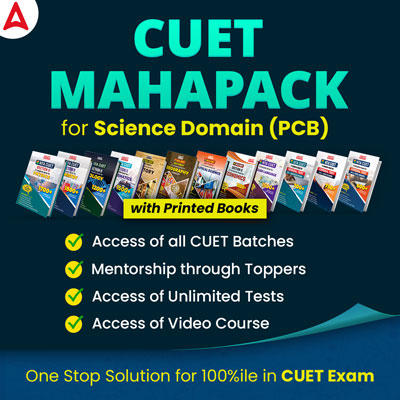
Ncert Solutions For Class 11 Chemistry Chapter 12 Pdf Download
Adda247 provides NCERT Solutions for class 11 chemistry chapter 12. The NCERT Solutions provided here will enhance the concepts of the students, as well as suggest alternative methods to solve particular problems to the teachers.
Chemistry is much more than the language of Science. We aim to aid the students with answering the questions correctly using logical approach and methodology. The NCERT Solutions provide ample material to enable students to form a good base with the fundamentals of the subject.
Students who are looking for Class 11 Chemistry NCERT Solutions can refer to this article. Students will be provided detailed Class 11 Chemistry NCERT Solutions. Students can find here NCERT Solutions of Class 11 Chemistry PDF in Hindi and English medium.
Students of Class 11 must be through with Science NCERT Class 11 Chemistry Solutions in order to secure good marks in the board exams. These solutions will not only help the students to prepare for board exams but also prepare for competitive medical and engineering entrance exams.
Chemistry is an interesting subject but many of your students might find it confusing to understand. It can be a struggle for many of you.
From the NCERT Solutions at Adda247, students will clearly learn about all the chemical reactions which occur in our day to day life. The solutions explain each and every minute concept in a best way possible so that students do not face any problem in the exam. It not only boost their exam preparation but also provides a strong foundation of fundamental concepts which frequently appear in various competitive exams. Using these solutions, students will understand how to approach complex questions that would arise in the exam and answer them with full confidence.
Benefits of Solutions of NCERT class 11 Chemistry:
- NCERT Solutions for Class 11 is helpful to solve questions from other reference books too.
- NCERT Solutions for class 11 Chemistry will assist students to cross check answers and prepare for the exams in a strategic way.
The students can access the solutions anywhere while browsing web easily. The solutions are very precise and accurate.
[sso_enhancement_lead_form_manual title=”Download Full PDF of Class 11 Chemistry Chapter 12 ” button =”Download Now” pdf =”/jobs/wp-content/uploads/2021/07/10183717/chapter-12-11th-class.pdf”]
NCERT Solutions of Chemistry Class 11 Chapter 12: Organic chemistry – Some Basic principles and Techniques
Hydrogen is the most abundant in this universe, and thus any knowledge about this element allows one to explore numerous scientific phenomenon. Keeping this aspect in mind, CBSE has incorporated this topic into their curriculum so that keen students can learn the basic of this element.
Such a topic may seem challenging for students to decipher. In such a synopsis, they can rely on Hydrogen Class 11 Chemistry NCERT Solutions that provide comprehensive guidance on this topic with its eloquent explanation.
NCERT Solutions for Class 11 Chemistry Chapter 12 Organic Chemistry – Some Basic Principles and Techniques is a very climacteric material for the students in order to score well in their Class 11 examinations like NEET, IIT and State board entrance tests. These NCERT Solutions for Class 11 Chemistry holistically help you to get acquainted with the chapter by giving answers to the questions given in the textbooks.
The NCERT Solutions for Class 11 Chemistry are prepared by experts at Adda247 having tremendous experience in the subject. Unambiguous explanations are provided for ease of understanding. Students can now access the PDF of NCERT Solutions for Class 11 Chemistry Chapter 11 from the link attached below for free.
Subtopics of Class 11 Chemistry Chapter 12
- General introduction
- Tetravalence of Carbon: Shapes of Organic Compounds
- Structural Representations of Organic Compounds
- Complete, Condensed And Bond-line Structural Formulas
- Three-dimensional Representation of Organic Molecules.
- Classification of Organic Compounds
- Nomenclature of Organic Compounds
- The IUPAC System of Nomenclature
- IUPAC Nomenclature of Alkanes
- Nomenclature of Organic Compounds Having Functional Group(S)
- Nomenclature Of Substituted Benzene Compounds
- Isomerism
- Structural Isomerism
- Stereoisomerism
- Fundamental Concepts in Organic Reaction Mechanism
- Fission of A Covalent Bond
- Nucleophiles And Electrophiles
- Electron Movement in Organic Reactions
- Electron Displacement Effects in Covalent Bonds
- Inductive Effect
- Resonance Structure
- Resonance Effect
- Electromeric Effect
- Hyperconjugation
- Types of Organic Reactions and Mechanisms
- Methods of Purification or Organic Compounds
- Sublimation
- Crystallization
- Distillation
- Differential Extraction
- Chromatography
- Qualitative Analysis of Organic Compounds
- Detection of Carbon and Hydrogen
- Detection of Other Elements
- Quantitative Analysis
- Carbon and Hydrogen
- Nitrogen
- Halogens
- Sulphur
- Phosphorus
- Oxygen
Some of Important topics covered in NCERT Solutions for Class 11 Chemistry Chapter 12 are:
- Tetravalence of carbon
- Structural representations of organic compounds
- Classification and nomenclature of organic compounds
- Isomerism
- Fundamental concepts in organic reaction mechanisms
- Methods of purification of organic compounds
- Qualitative and quantitative analysis.
Important questions of NCERT Solutions of Chemistry Class 11 Chapter 12
Question: 1 What are the hybridisation states of each carbon atom in the following compounds?
CH2=C=O, CH3CH=CH2, (CH3)2CO, CH2=CHCN, C6H6
Answer:
(i) C-1 is sp2 hybridised.
C-2 is sp hybridised.
(ii) C-1 is sp3 hybridised.
C-2 is sp2 hybridised.
C-3 is sp2 hybridised.
(iii) C -1 and C-3 are sp3 hybridised.
C-2 is sp2 hybridised.
(iv) C-1 is sp2 hybridised.
C-2 is sp2 hybridised.
C-3 is sp hybridised.
(v) C6H6 All the 6 carbon atoms in benzene are sp2 hybridised.
Question: 2 Which of the following represents the correct IUPAC name for the compounds concerned?
a.) 2,2 – Dimethylpentane or 2 – Dimethylpentane
b.) 2,4,7 – Trimethyloctane or 2,5,7 – Trimethyloctane
c.) 2 – Chloro – 4- methylpentane or 4 – Chloro – 2- methylpentane
d.) But – 3 – yn – 1 – ol or But – 4 – ol – 1 – yne
Answer:
(a) 2,2-Dimethylpentane or 2-Dimethylpentane
Answer : 2,2-Dimethylpentane
Reason : due to two alkyl group on the same carbon its locant is repeated two times .
Hence, 2,2-dimethylpentane is the right answer .
(b) 2,4,7-Trimethyloctane or 2,5,7-Trimethyloctane
Answer : 2,4,7-Trimethyloctane
Reason : due to 2,4,7 locant is set of lower than 2,5,7 . 2,4,7 -Trimethylocatne is the right answer .
(c) 2-Chloro-4-methylpentane or 4-Chloro-2-methylpentane
Answer : 2-Chloro-4-methylpentane
Reason : due to alphabetical order of substituents, 2-chloro – 4-methylpentane is right answer.
(d) But-3-yn-1-ol or But-4-ol-1-yne
Answer : But-3-yn-1-ol
Reason : due to the rule of “lower locant for the principal functional group” { here alcohol is principal functional group}
Question: 3 Draw the formulas for the first five members of each homologus series beginning with the following compounds.
a.) H-COOH
b.) CH3COCH3
c.) H-CH=CH2
Answer:
The first five members of each homologous series beginning with the given compounds are shown as follows:
(a)
H-COOH : Methanoic acid
CH3-COOH : Ethanoic acid
CH3-CH2-COOH : Propanoic acid
CH3-CH2-CH2-COOH : Butanoic acid
CH3-CH2-CH2-CH2-COOH : Pentanoic acid
(b)
CH3COCH3 : Propanone
CH3COCH2CH3 : Butanone
CH3COCH2CH2CH3 : Pentan-2-one
CH3COCH2CH2CH2CH3 : Hexan-2-one
CH3COCH2CH2CH2CH2CH3 : Heptan-2-one
(c)
H-CH=CH2 : Ethene
CH3-CH=CH2 : Propene
CH3-CH2-CH=CH2 : 1-Butene
CH3-CH2-CH2-CH=CH2 : 1-Pentene
CH3-CH2-CH2-CH2-CH=CH2 : 1-Hexene
Question: 4 Which of the two:
O2NCH2CH2O- or CH3CH2O- is expected to be more stable and why?
Answer:
NO2 group is an electron-withdrawing group. Hence, it shows –I effect. By withdrawing the electrons toward it, the NO2 group decreases the negative charge on the compound, thereby stabilising it. On the other hand, ethyl group is an electron-releasing group. Hence, the ethyl group shows +I effect. This increases the negative charge on the compound, thereby destabilising it. Hence, O2NCH2CH2O– is expected to be more stable than CH3CH2O–.
Question: 5 What are electrophiles and nucleophiles? Explain with examples.
Answer:
An electrophile is a reagent that takes away an electron pair. In other words, an electron-seeking reagent is called an electrophile (E+). Electrophiles are electron-deficient and can receive an electron pair.
Carbocations and (CH3CH+2) neutral molecules having functional groups such as carbonyl group (C=O) are examples of electrophiles.
A nucleophile is a reagent that brings an electron pair. In other words, a nucleus-seeking reagent is called a nucleophile (Nu:).
For example: OH-, NC-, carbanions (R3C-), etc.
Neutral molecules such as H2ö and ammonia also act as nucleophiles because of the presence of a lone pair.
Question: 6 Identify the reagents shown in bold in the following equations as nucleophiles:
a.) CH3COOH + HO- à CH3COO- + H2O
b.) CH3COCH3 + CN à (CH3)2C(CN)(OH)
c.) C6H5 + CH3CO à C6H5COCH3
Answer:
Electrophiles are electron-deficient species and can receive an electron pair. On the other hand, nucleophiles are electron-rich species and can donate their electrons.
(a) CH3COOH + HO- à CH3COO- + H2O
Here, HO- acts as a nucleophile as it is an electron-rich species, i.e., it is a nucleus-seeking species.
(b) CH3COCH3 + C- N à (CH3)2 C (CN) (OH)
Here, C-N acts as a nucleophile as it is an electron-rich species, i.e., it is a nucleus-seeking species.
(c) C6H5 + CH3C+ O à C6H5COCH3
Here, CH3C+O acts as an electrophile as it is an electron-deficient species.
Question: 7 Classify the following reactions in one of the reaction type studied in this unit.
a.) CH3CH2Br + HS- à CH3CH2SH + Br-
b.) (CH3)2C=CH2 + HCl à (CH3)2ClC-CH3
c.) CH3CH2Br + HO- à CH2=CH2 + H2O + Br-
d.) (CH3)2C-CH2OH + HBr à (CH3)2CBrCH2CH3 + H2O
Answer:
(a) Br- and HS- are electron rich species. Hence, it is Nucleophile.
A Nucleophile (Br-) is replaced by other Nucleophile ( HS-) . Hence, it is nucleophilic substitution reaction.
(b) HCl is added to the double bond.
HCl is electron- loving species and it addition on double bond (C=C) hence, it is electrophilic addition reaction.
(c) H and Br are eliminated from successive Carbon atoms hence, it is Beta – elimination reaction.
(d) OH- and Br- are electron rich species .hence, it is Nucleophile and we see that Nucleophile (OH-) is replaced by Nucleophile ( Br-). Hence, it is nucleophilic substitution reaction with rearrangement {because after reaction products are rearranged }
Question: 8 Give a brief description of the principles of the following techniques taking an example in each case.
a.) Crystallisation
b.) Distillation
c.) Chromatography
Answer:
Crystallisation:
Crystallisation is the common way of purifying organic solids. It is based on the difference in the solubilities of the compound and the impurities in a suitable solvent. The impure compound is dissolved in a solvent in which it is sparingly soluble at room temperature but appreciably soluble st higher temperature. The solution is concentrated to get a nearly saturated solution. On cooling the solution, pure compound crystallises out and is removed by filtration.
It the compound is highly soluble in one solvent and very little in another solvent, crystallisation can be satisfactorily carried out in a mixture of these solvents. Coloured impurities are removed by adsorbing them over activated charcoal. The crystals are separated by filtering under reduced pressure using Buchner funnel. The crystals are finally dried over sulphuric acid or calcium chloride in vaccum desiccator.
Repeated crystallisation becomes necessary for the purification of compounds containing impurities of comparable solubilities.
Distillation:
Distillation is one of the effective method for separation of liquid type mixture and it work on the principle of difference in boiling point. When two liquids of high boiling point difference are mixed they can be separated out by using this method.
Ex:- Ether presents as impurity in alcohols because of weak inter molecular forces ether are volatile in nature whereas alcohols have inter molecular hydrogen bonding and this mixture can be separated by simple heating above 30 C where ether is evaporated first and the vapour’s are condensed where alcohols is left over in the flask.
Fractional distillation:-
It is the one of the effective method to separate liquid in liquid solutions of similar boiling point which are having less boiling point difference.
Ex:- Fractional distillation of petroleum. Petroleum is a crude oil is a mixture of different hydrocarbons and this can be separated out different columns of fractional distillations. In the fractional distillation plant the hydro- carbon having less boiling point is separated at the top of the container and the hydro-carbon with high boiling point is separated as the bottom of the container.
Chromatography:
Chromatography is one of the effective separation for liquids and pigments and it work under principle of Adsorption.
Adsorption it is a surface phenomenon where one of the substance get accumulated on the surface of another surface.
Adsorption in separation of a mixture it is taken on a stationary face kept in a mobile phase (solvent) different substance present in a mixture will have different rate of absorption one of the effective method.
Column chromatography:- Column chromatography involves separation of a mixture over a column of adsorbent ( stationary phase) packed in a glass tube. The column is fitted with a stopcock as it lower end. The mixture adsorbed is placed on the top of the adsorbent column packed in a glass tube. A suitable eluant, either a single solvent or a mixture of solvents is allowed to flow down the column slowly. Depending upon the degree to which the compounds are adsorbed, complete separation takes place. The most readily adsorbed substances are retained near the top and others come down accordingly to various distances in the column.
Thin layer chromatography is another type of adsorption chromatography, which involves separation of the substances of a mixture over a thin layer of an adsorbent coated on glass plate. A thin layer (about 0.2mm thick) of an adsorbent is spread over a glass plate of suitable size. The plate is known as thin layer chromatography plate or chromaplate. The solution of the mixture to be separated is applied as a small spot about 2 cm above the end of the thin layer chromatography plate.
Partition Chromatography:
Partition chromatography is based on continuous differential partitioning of components of a mixture between stationary and mobile phases. Paper chromatography is an example. In paper chromatography a special quality paper known as chromatography paper is used. This paper contains water trapped in it, which acts as the stationary phase.
A strip of chromatography paper spotted at the base with the solution of the mixture in suspended in a suitable solvent or a mixture of solvents. This solvent acts as the mobile phase. The solvent rises up the paper by capillary action and flows over the spot.
The paper selectively retains different components according to their differing partition in the two phases. The paper strip so developed is known as chromatogram. The spots of the separated coloured compounds are visible at the different heights from the position of initial spot on the chromatogram.
Question: 9 Describe the method, which can be used to separate two compounds with different solubilities in a solvent S.
Answer:
Two compounds which have different solubilities in a solvent S can be separated from each other by Fractional Crystallisation. The process involves a series of repeated-crystallisations. The mixture of the two compounds in the solvent S is heated so as to make it saturated. When the hot solution is allowed to cool, the less soluble substance crsytallises out first while the more soluble substance remains in the solution. The crystals of first compound are separated from the mother liquor and the mother liquor is again concentrated and allowed to cool when the crystals of the 2nd compound are obtained.
Question: 10 Discuss the principles of estimation of halogens, sulphur and phosphorus present in an organic compound.
Answer:
Principle of estimation of halogens:
A known mass of the organic compound is heated with fuming nitric acid and a few Crystal of silver nitrate is a sealed hard glass tube.
Under the conditions, carbon and Hydrogen are oxidised to carbon dioxide and water respectively while halogens is converted into silver halide. The participate of silver halide is filtered, washed, dried and weighed. Knowing the mass of the substance taken and the mass of precipitate formed, the percentage of halogens is calculated as follow,
% of X = (atomic mass of X/molecule mass of AgX) × {mass of AgX formed /mass of substance taken} × 100
Principle of estimation of sulphur :-
A known mass of the substance is heated with sodium peroxide or fuming nitric acid in a sealed tube. Carbon and Hydrogen are oxidised to CO2 and H2O respectively. While sulphur present in the compound is oxidised to H2SO4 which is them precipitated as Barium sulphate by adding of barium chloride solution.
The PPT of BaSO4 is filtered, washed, dried and weighed. Knowing the mass of the substance taken and the mass of BaSO4 ppt formed,
% of S = {32/233} × { mass of BaSO4 formed/mass of substance taken } × 100
Principle of estimation of phosphorus :-
A known mass of organic substance is heated with fuming nitric acid in a sealed tube . Under these conditions , C and H are oxidised to CO2 and H2O respectively. While Phosphorus present in organic compound is oxidised to H3PO4 which is precipitated as ammonium phosphomolybadate by heating it with conc.HNO3 and then adding ammonium molybdate.
The precipitated of a mm phosphomolybadate are filtered , washed , dried and weighed .
% of P = {31/1877} × {mass of a mm. phosphomolybadate formed /mass of substance taken} × 100
Question: 11 What is the difference between distillation, distillation under reduced pressure and steam distillation?
Answer:
The differences among distillation, distillation under reduced pressure and steam distillation rae given in the following table:
| Distillation | Distillation under reduced pressure | Steam distillation |
| It is used for the purification of compounds that are associated with non – volatile impurities or those liquids, which do not decompose on boiling. In other words, distillation is used to separate volatile liquids form non – volatile impurities or a mixture of those liquids that have sufficient difference in boiling points. | This method is used to purify a liquid that tends to decompose on boiling. Under the conditions of reduced pressure, the liquid will boil at a low temperature than its boiling point and will therefore, not decompose. | It is used to purify an organic compound, which is steam volatile and immiscible in water. On passing steam, the compound gets heated up and the steam gets condensed to water. After some time, the mixture of water and liquid starts to boil and passes through the condenser. This condensed mixture of water and liquid is then separated by using a separating funnel. |
| Mixture of petrol and kerosene is separated by this method. | Glycerol is purified by this method. It boils with decomposition at a temperature of 593 K. At a reduced pressure, it boils at 453 K without decomposition. | A mixture of water and aniline is separated by steam distillation. |
Frequently asked questions on NCERT Solutions of Chemistry Class 11 Chapter 12
- Key benefits of NCERT Solutions for Class 11 Chemistry Chapter 12 are provided here:
Ans.
- Students can easily access the solutions for each exercise from the chapters available.
- The solutions also provided graphs and illustrations that help to understand the concepts clearly.
- These solutions are prepared by Adda247 expert team focusing on accuracy.
- What is isomerism and what are its types?
Ans. Isomerism is the phenomenon in which more than one compounds have the same chemical formula but different chemical structures. Chemical compounds that have identical chemical formulae but differ in properties and the arrangement of atoms in the molecule are called isomers. Therefore, the compounds that exhibit isomerism are known as isomers.
The word “isomer” is derived from the Greek words “isos” and “meros”, which mean “equal parts”. This term was coined by the Swedish chemist Jacob Berzelius in the year 1830.
Types
There are two primary types of isomerism, which can be further categorized into different subtypes. These primary types are Structural Isomerism and Stereoisomerism. The classification of different types of isomers is illustrated below.
Structural Isomerism
Structural isomerism is commonly referred to as constitutional isomerism. The functional groups and the atoms in the molecules of these isomers are linked in different ways. Different structural isomers are assigned different IUPAC names since they may or may not contain the same functional group.
Stereoisomerism
This type of isomerism arises in compounds having the same chemical formula but different orientations of the atoms belonging to the molecule in three-dimensional space. The compounds that exhibit stereoisomerism are often referred to as stereoisomers. This phenomenon can be further categorized into two subtypes. Both these subtypes are briefly described in this subsection.
Stereoisomerism is further divided into two types:
Geometrical isomerism
Optical isomerism
- What happens in an organic reaction?
Ans. The fundamental concepts of organic reaction is based on the fission of covalent bonds. A covalent bond undergoes fission in two ways:
- Homolytic Fission – this is also referred to as homolytic fission where each of the atoms acquires one of the bonding electrons.
- Heterolytic Fission – When the bond is broken in such fission, one of the atoms acquire both of the bonding electrons.
The process of fission gives rise to reaction intermediaries that are short-lived fragments. Some of the important reaction intermediaries are carbanions, carbenes, carbonium ions, and carbon-free radicals.




 NEET City Intimation Slip 2025 Available...
NEET City Intimation Slip 2025 Available...
 WB Madhyamik Result 2025 OUT at wbresult...
WB Madhyamik Result 2025 OUT at wbresult...
 CUET UG 2025 City Intimation Slip PDF Li...
CUET UG 2025 City Intimation Slip PDF Li...






